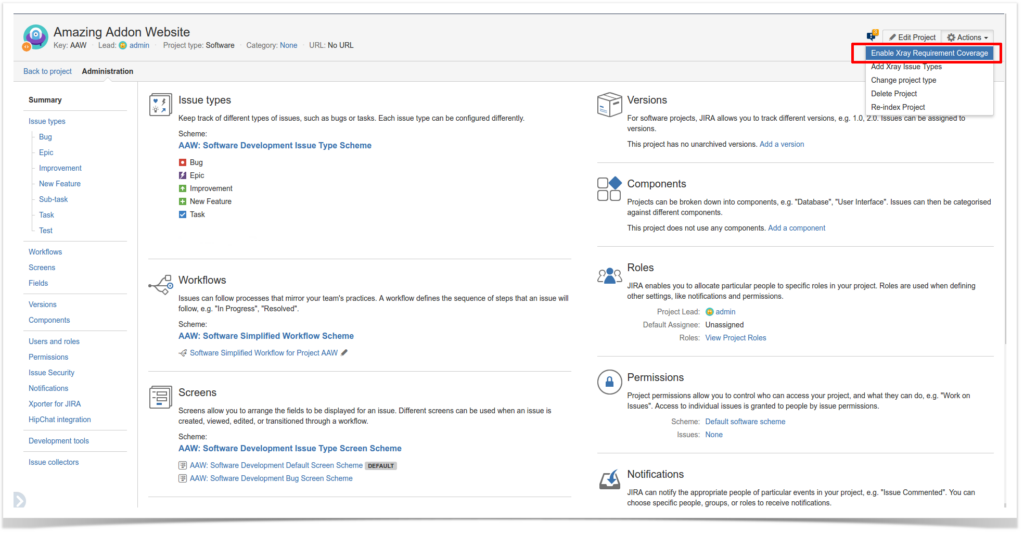In this article, we take a initial look at Xray and provide you with a practical guide to importing test cases from other plugins or tools into your Jira projects. Xray Test Management for Jira offers a powerful solution that integrates seamlessly into the Jira environment and provides comprehensive test management capabilities.
In the world of agile project management, smooth test case management is critical to the quality and reliability of software. Test case management is essential to the software testing process because it enables the systematic creation, organization, and administration of test cases. This structure ensures comprehensive test coverage by deliberately testing all scoped parts of an application.
Well-managed test cases ensure repeatability, which helps identify and fix defects consistently. Traceability is another key aspect, as test case management records which tests were executed, what results were achieved, and which defects were identified and resolved. Efficient use of resources is another benefit, as test case management ensures tests are targeted and relevant, avoiding unnecessary waste of time and resources. Finally, well-designed test case management enables early defect detection in the development process, leading to more cost-effective remediation.
Xray at a glance
Xray was introduced in 2013 and has established itself as one of the leading test management solutions in the Jira ecosystem. The integration with Jira is so seamless that the look and feel remains consistent with Jira. This add-on enables comprehensive test coverage, monitoring, execution, and reporting directly within your Jira instance.
Key features at a glance:
- Test case management: Xray makes it easy to create, manage, and prioritize test cases directly in Jira issues.
- Test execution: Plan and track test runs linked to specific releases or sprints.
- Integration with Jira issues: Xray leverages Jira issues for workflow and screen customization, and allows you to manage both manual and automated tests.
- Data-driven testing: Manage datasets for data-driven testing to enable more flexible test execution.
- API support: Xray provides comprehensive API support with REST and GraphQL.
Possible drawbacks:
- Each Xray entity creates a new Jira issue, which can lead to a large number of issues.
- Performance can be affected because Xray uses Jira’s storage.
- You may depend on external tools and plugins for exploratory testing (ET), requirements, user stories, and more. These capabilities are not supported by Xray.
Configuration during app installation
Installing Xray requires a few configuration steps to ensure your team can get the most out of its features. Among other things, you need to define who can create plans and change project configurations.
- Under “Miscellaneous”, adjust the settings for plans and project changes and assign permissions.
- In the project, open the configuration, go to “Summary” and select “Add Xray Issue Types” to add issue types and schemes. The project is now configured to be Xray-compliant and the plugin is fully available. Alternatively, you can manually adjust the project’s issue type scheme and screens and add the required elements.

Importing test cases from other tools
Importing test cases can be an important capability, especially for organizations that previously worked with other tools and are now planning to move to Xray. Importing test cases requires mindful preparation of the CSV export file and execution. Here are the steps:
- Preparing the import file:
- Back up your test cases before you start.
- Export the test cases from the relevant tool as a CSV file.
- Adjust the export table. Use the sample table from the documentation. To import the CSV file, TCID, Summary, and Actions are mandatory fields.
- Importing into Xray:
- Use the Test Case Importer.
- Select the project and map the fields (CSV->project), with both Xray and Jira fields available.
- Run the import, and perform any manual follow-up if warnings appear.
Bottom line
The seamless integration of Xray Test Management for Jira gives your team the ability to plan, execute, and monitor test processes efficiently, improving the quality of your software products directly within the familiar Jira environment. The widespread use of this tool is a clear sign of its recognition and acceptance in the community. It offers a wide range of features, including BDD testing and dataset management. However, keep in mind that the Jira add-on has its limitations, especially regarding quality assurance. You should also consider that Xray uses Jira’s storage. As the scope of testing grows, performance issues may become noticeable.
If you have questions about tool support for configuration and implementation, we are happy to help. Contact us for further information and assistance.